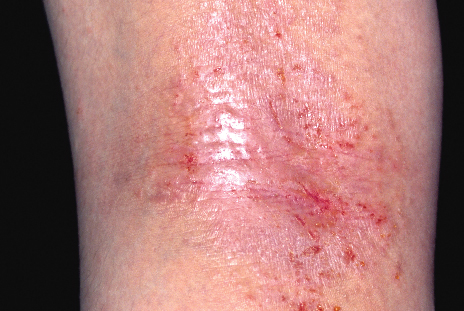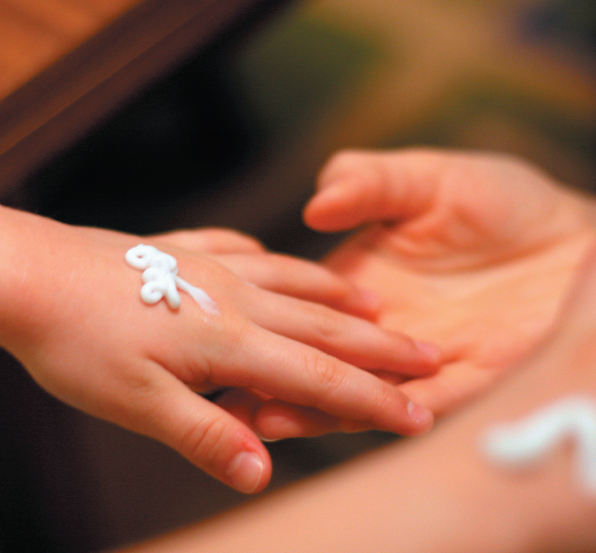There are many moisturisers available for the treatment of dry skin. All aim to replace the water lost from the skin or to restore the balance of oils on the skin's surface. Examples: Dove Intensive Nourishing Lotion, Nivea Lotion for Dry Skin.
Emollients
 The recommended first line of treatment for very dry skin is emollient therapy. Emollients play an important role in the management of dry skin conditions because they help to keep skin moisturised, reducing the likelihood of flare-ups. In the treatment of atopic eczema (pictured) emollients are often used in conjunction with prescribed products such as steroid creams.
The recommended first line of treatment for very dry skin is emollient therapy. Emollients play an important role in the management of dry skin conditions because they help to keep skin moisturised, reducing the likelihood of flare-ups. In the treatment of atopic eczema (pictured) emollients are often used in conjunction with prescribed products such as steroid creams.
As well as making the skin feel more comfortable, emollients help to make the skin look better, as the roughness and dryness disappear, and it may feel less irritated and itchy.
Emollient products form a protective layer on the skin. They help to prevent moisture from escaping from the skin and soften it, making it more pliable and comfortable.
Emollients are available in a range of different formats, including creams, lotions andshower gels. You can help customers to get the best out of emollients by explaining how and when they should be used. Examples: Diprobase, Epaderm, Eucerin.

Emollients should be applied at least twice a day
Topical steroids
There are a number of topical steroids (e.g. hydrocortisone, clobetasone butyrate) available OTC for the treatment of mild to moderate eczema. These are used to reduce swelling and redness during flare-ups. Examples: Eurax HC Cream, Hc45 Hydrocortisone Cream.
Reflection points
1. Look at the different dry skin products stocked in your pharmacy and find out what they contain.
2. What additional advice would you give a customer applying an emollient?
